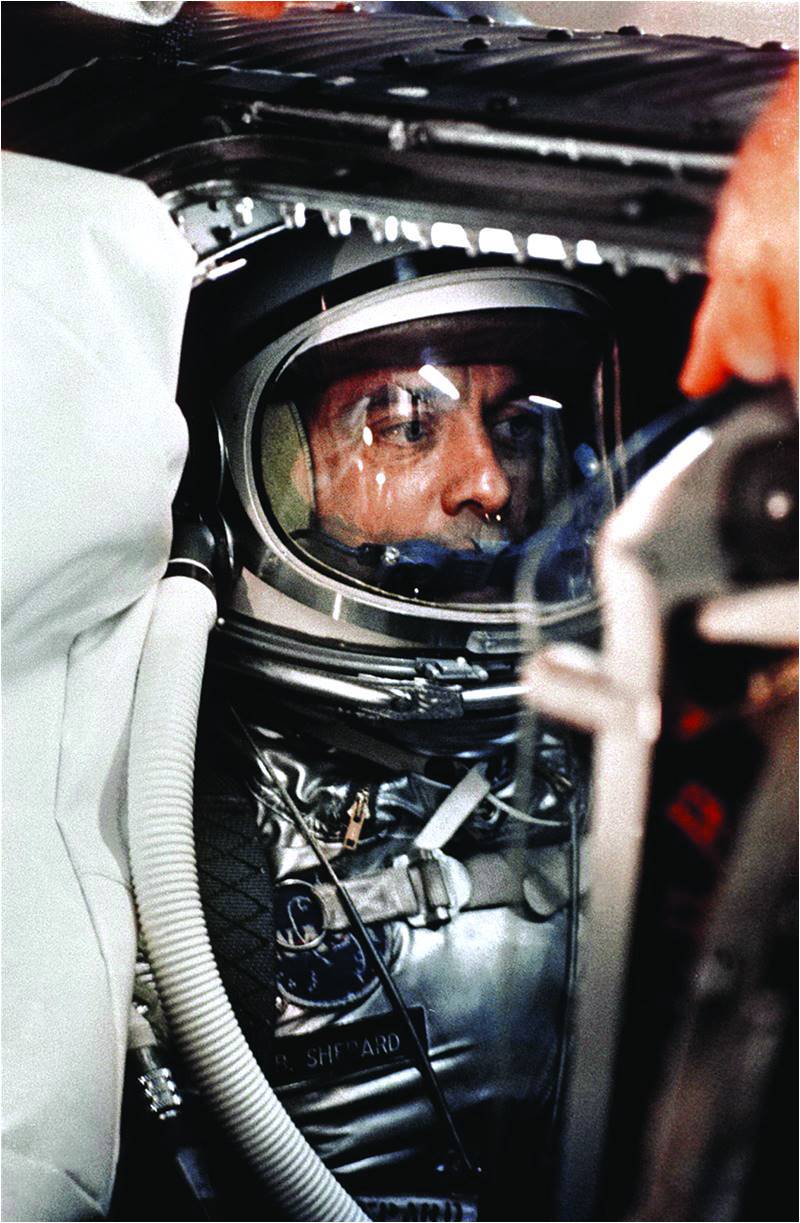
This photograph shows Alan Shepard, the first American to reach space, just before he launched on a suborbital flight on May 5, 1961.
Shepard narrowly missed out on being the first human in space — Soviet cosmonaut Yuri Gagarin beat him to the punch about three weeks earlier, successfully completing one orbit of Earth on April 12.
Shepard’s achievement was much more modest than that of Gagarin, who reached Earth orbit and stayed aloft for 108 minutes.
Shepard’s Mercury spacecraft — which bore the name Freedom 7 — made it to suborbital space, reaching a peak altitude of 187 kilometers and a top speed of 5,180 mph. The flight lasted just 15 minutes before splashing down in the Atlantic Ocean 302 miles (486 km) from the Florida launch site.
Shepard was packed pretty tightly into the one-man Freedom 7 capsule, which measured 11.5 feet (3.5 meters) tall and was just 6.2 feet (1.9 m) across at its widest point. By contrast, Gagarin’s Vostok 1 capsule was about 14.4 feet (4.4 m) high.
The Freedom 7 wasn’t built for comfort or sightseeing. It had portholes instead of windows, and Shepard made his key Earth observations through a periscope, like a submarine captain.
Still, the astronaut managed to make out some landmarks on terra firma during his flight. He spotted Florida’s Lake Okeechobee, as well as some islands in the Bahamas, according to NASA officials.
A Redstone booster lofted the Freedom 7 to suborbital space. When NASA initiated orbital flights in 1962, the agency employed more powerful Atlas rockets, which had originally been designed to carry nuclear bombs.
Gagarin’s flight was largely automated, so the cosmonaut didn’t have to do much during his orbital sojourn. But Shepard played a more active role on his maiden spaceflight, taking control of the Freedom 7 for several brief periods.
For example, Shepard manually positioned the capsule to fire its retrorockets, which helped the craft decelerate. He also corrected a slight pitch problem in one instance, and he steered the craft by hand for a spell during re-entry, according to NASA officials.
Shepard narrowly missed out on being the first human in space — Soviet cosmonaut Yuri Gagarin beat him to the punch about three weeks earlier, successfully completing one orbit of Earth on April 12.
Shepard’s achievement was much more modest than that of Gagarin, who reached Earth orbit and stayed aloft for 108 minutes.
Shepard’s Mercury spacecraft — which bore the name Freedom 7 — made it to suborbital space, reaching a peak altitude of 187 kilometers and a top speed of 5,180 mph. The flight lasted just 15 minutes before splashing down in the Atlantic Ocean 302 miles (486 km) from the Florida launch site.
Shepard was packed pretty tightly into the one-man Freedom 7 capsule, which measured 11.5 feet (3.5 meters) tall and was just 6.2 feet (1.9 m) across at its widest point. By contrast, Gagarin’s Vostok 1 capsule was about 14.4 feet (4.4 m) high.
The Freedom 7 wasn’t built for comfort or sightseeing. It had portholes instead of windows, and Shepard made his key Earth observations through a periscope, like a submarine captain.
Still, the astronaut managed to make out some landmarks on terra firma during his flight. He spotted Florida’s Lake Okeechobee, as well as some islands in the Bahamas, according to NASA officials.
A Redstone booster lofted the Freedom 7 to suborbital space. When NASA initiated orbital flights in 1962, the agency employed more powerful Atlas rockets, which had originally been designed to carry nuclear bombs.
Gagarin’s flight was largely automated, so the cosmonaut didn’t have to do much during his orbital sojourn. But Shepard played a more active role on his maiden spaceflight, taking control of the Freedom 7 for several brief periods.
For example, Shepard manually positioned the capsule to fire its retrorockets, which helped the craft decelerate. He also corrected a slight pitch problem in one instance, and he steered the craft by hand for a spell during re-entry, according to NASA officials.

